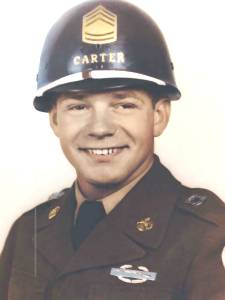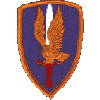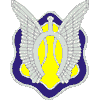| |
|
|
|
Harold E. Carter
Sergeant First Class
D TRP, 3RD SQDN, 17TH CAVALRY, 1ST AVIATION BDE, USARV Army of the United States Columbus, Georgia November 22, 1930 to February 21, 1969 HAROLD E CARTER is on the Wall at Panel W32, Line 70 See the full profile or name rubbing for Harold Carter |
  |

|



| |
A Note from The Virtual WallAviation is an unforgiving business, and combat aviation is even less so.The VHPA helicopter database has two records regarding OH-6A tail number 66-17823. The first is dated 02 November 1968, when the aircraft was assigned to the 25th Aviation Company. On that date, WO1 R. G. Miller, pilot, and 1LT M. A. Palmer, aerial observer, flew a visual recon mission from Long Binh to Bien Hoa, thence along Highway 1 to Xuan Loc, thence Highway 20 to the III CTZ border, returning along the same route. On the return leg, WO Miller noted a low fuel condition and decided to land at Xuan Loc to refuel. He didn't make it; instead his engine stopped and he autorotated the aircraft to a hard landing near Highway 20 short of Xuan Loc. The subsequent investigation determined that the engine stopped due to fuel starvation, that the aircraft's fuel gauge read about 40 pounds high, and that its low fuel warning light wasn't working. Simply stated, Warrant Officer Miller had run out of gas. Although the aircraft was damaged, Miller and Palmer were no worse for wear. OH-6A tail number 66-17823 went to the repair shop and on completion of structural repairs was assigned to C Troop, 3rd Squadron, 17th Cavalry. On 21 Feb 1969, the aircraft was assigned as half of an OH-6/AH-1 hunter-killer team. The OH-6A crew consisted of 1LT S. G. Reed, pilot; SFC Harold E. Carter, observer; and PFC Grover C. Bowen, crew chief. As 1LT Reed preflighted the aircraft, he noticed that the fuel gauge indicated 250 pounds rather than the expected 300 pounds. Reed queried SFC Carter and was advised that this aircraft read low - that when carrying 300 pounds of fuel the gauge would read only 250 pounds. SFC Carter pointed out that there was a statement to that effect written on the instrument panel next to the fuel gauge. Satisfied, 1LT Reed completed his preflight and the two aircraft launched at about 0645 and headed for their operating area. After almost an hour in the area, Reed advised flight lead (in the AH-1G) that he, Reed, was indicating about 80 pounds of fuel. The flight leader directed a climb to higher altitude enroute home base. As the aircraft climbed out, they encountered a flight of UH-1s and lost sight of one another for about 5 minutes. When visual contact was regained, flight lead was uncertain of their position and directed Reed to land among U.S. ground troops to determine where they were. Reed did so, staying on the ground for several minutes before lifting off. On lift off he advised flight lead that he was indicating 40 pounds of fuel. While heading for base at a low altitude, Reed climbed slightly to go over a stand of trees. As he cleared the trees at an altitude of about 90 feet and about 60 knots airspeed, the OH-6's engine stopped. Although Reed attempted an autorotation, he had neither altitude nor airspeed. The OH-6 was moving at 30 to 50 knots when it hit the ground, impacting on its left side in a nose-low attitude and continuing on for about 50 meters before coming to rest. First Lieutenant Reed survived the accident; SFC Carter and PFC Bowen did not. |
| Contact Us | © Copyright 1997-2019 www.VirtualWall.org, Ltd ®(TM) | Last update 08/15/2019. |